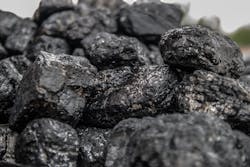Indiana Coal Plant Contaminant Levels 40 Times Over Drinking Water Standards
According to a new data reveal by the U.S. EPA, groundwater surrounding many Indiana plants powered by coal constitutes a toxic mixture of arsenic, boron, cobalt, lead, molybdenum, radium and thallium. One site, the Indianapolis Power and Light harding Street station, has arsenic levels at 445 ppb, more than 45 times the maximum level of 10 ppb.
The new report will likely catalyze a reaction by the various plants to suggest approaches that would significantly reduce the contamination levels revealed by the new data. Indiana has more coal ash pits than any other state at 85.
It is unknown how far the contaminants have moved from the groundwater surrounding the plants, and potential effects on residential drinking water remains undetermined. However, Indiana’s utility companies stress that the samples were pulled from wells directly next to the plants.
While regulators will continue to study more samples, some ash pits will be closed by the utilities. Certain regulators claim this will not remedy the situation entirely, suggesting that the material should be removed and sealed in pits lined with concrete.
According to officials, the next steps to control the contaminants involves more extensive and and expansive groundwater sampling. This will aid in determining the magnitude of the issue.
The timing of the new report is tricky as well. The day prior to the utilities overturning the surprising data, EPA agency administrator Scott Pruitt announced plans to roll back Obama Era coal regulations that required continuous inspection of coal ash pits for leaks and the monitoring of surrounding areas for contamination. This potentially removes the federal government from the issue to an extent, leaving the issue to be solved by the state.
